How to propagate a spruce?
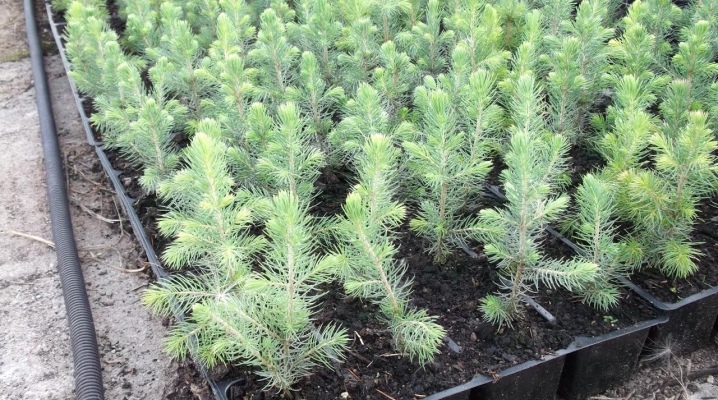
Various types of spruce, including magnificent trees with blue needles, are an indispensable element of the decorative compositions of country gardens. The easiest way to grow beautiful evergreen trees is by cuttings, but in this case, you will need knowledge of the intricacies of this process.
How do they reproduce in nature?
In their natural environment, ate, like all other plants, first bloom, after which they are pollinated and multiplied. This coniferous breed has specific reproductive organs - these are young modified branches called strobilae. Spruce is considered a monoecious plant, since organs of both sexes are formed in it.
Collected in several pieces, they form cones. In the last decade of spring, small female cones appear at the ends of the branches - a bundle of reddish megastrobilis, directed upwards. Macrospores that develop on them then form an embryonic sac with seeds. They are located on the upper shoots, which subsequently ensures the long-range flight of seeds.
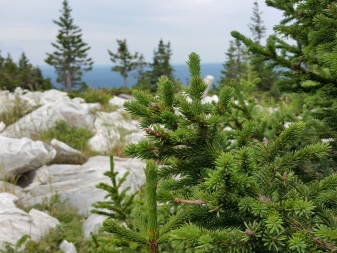
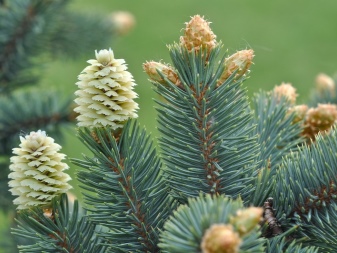
Male flowers are microstrobilis. These are staminate organs that form smaller, yellowish bumps, mainly formed on the lateral branches. The microspores formed on them result in pollen of the same yellow color. In the springtime, they throw it out and pollinate the female organs of the tree.
In autumn, fertilized female flowers are already quite large spruce cones, mostly brown in color. In some species, they can be completely dark, almost black. Weightless spruce seeds with transparent wings ripen in late winter and early spring. They instantly fly off the upper branches, and driven by the wind, they can be far from the mother tree.
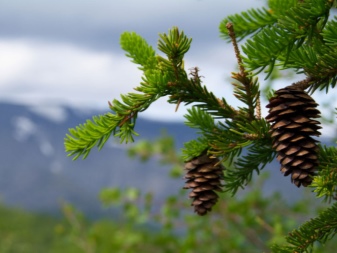
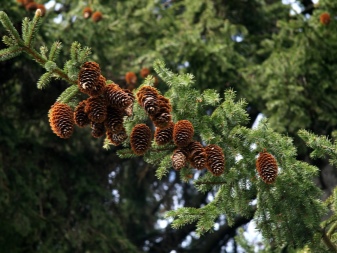
While maintaining germination, the seeds sometimes do not germinate for about 10 years, but then find a favorable moment and sprout, gradually rooting in the soil. Spruce shoot is a thin stem with a top in the form of a cotyledon node (whorl). The plant grows only 4 cm per year, then begins to grow faster. Protected by other trees at a tender age, as it grows, the coniferous beauty will gradually displace them, making its way under the sun.
Spruce trees acquire the ability to bloom at the age of 25-50 years, but in some varieties, with proper care, bumps appear as early as 10-15 years. The flowering of adult plants does not occur every year, but once every 3-5 years. If a tree is planted in a spacious area and has enough natural light, then it can begin to reproduce much earlier than in a forest or dense planting.
Despite the fact that in nature, spruce reproduces similar trees with the help of seeds, cultivation allows other methods of its reproduction.
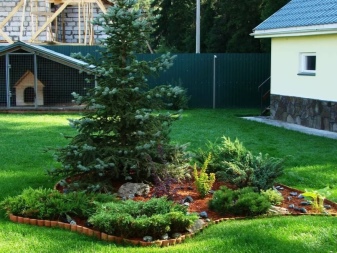
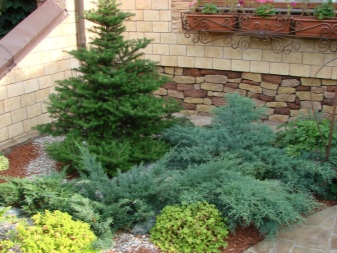
Breeding methods at home
On their plots, gardeners grow mainly blue spruce varieties, which are especially beautiful in the landscape design of the territory. For this, both low-growing varieties, reaching a height of 1.5-2 m, and tall trees, capable of growing up to 15-20 meters, are used. However, do not forget that spruce grows slowly and it can take more than a dozen years.
A popular culture, of course, is made by its insensitivity to the composition of the air, as well as frost resistance and drought resistance, but you need to understand that there are certain difficulties in cultivating coniferous species, including its reproduction.
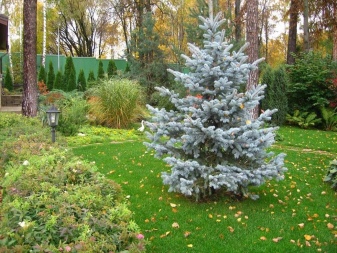

There are several ways to grow a spruce.
For those who are not looking for easy ways, suitable seed breeding... This is the most difficult method and does not guarantee the appearance of such a varietal tree as blue spruce on the site. It so happens that in the process of growing, the Christmas tree loses its noble blue and becomes green. Unfortunately, this can only be noticed in the second year of the plant's life.
To avoid disappointment, you need to know more about the selected variety and its features before buying.
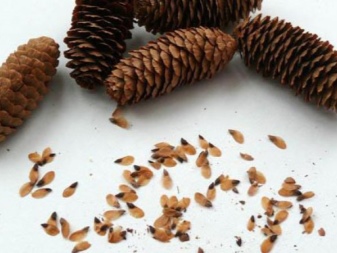
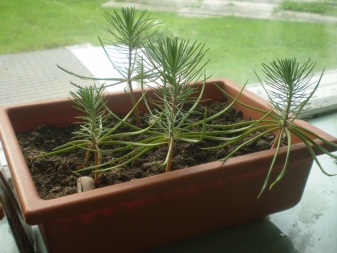
Seeds should be selected in special forestry. In this case, you need to pay attention to the following characteristics:
- the percentage of germination (it may depend on storage conditions);
- exclusion of crossing with other varieties of the breed;
- the quality of the seeds - they must be fresh (of the current season).
But good seed is only half the battle; the rules for preparing and sowing seeds must be followed to guarantee success. However, if you want to plant an ordinary Christmas tree in the garden, the seed method is also suitable.
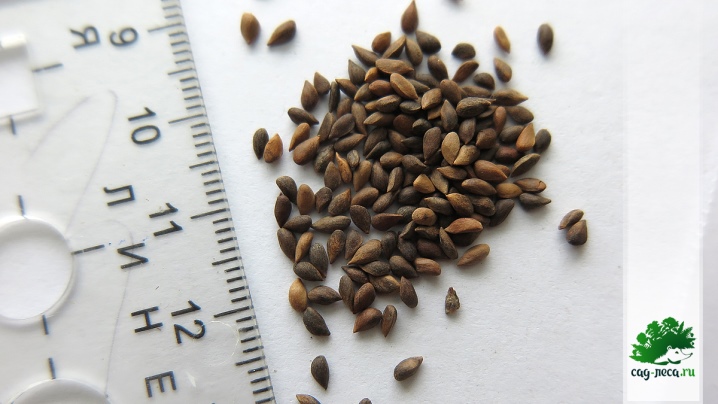
The most effective and uncomplicated is breeding ate by cuttings. So the tree takes root better, adapts faster to a new place, and it is much easier to care for the seedling. However, the vegetative method has its own subtleties - it is necessary to collect planting material in a timely manner, taking into account the age of the mother plants.
Even cuttings collected from young trees are capable of producing a developed root system only in 80%, while material taken from old spruce is viable only in half of the cases. The method is relevant for growing blue-type fir trees, as by sowing seeds they often grow with green needles.
Bearing in mind that the seeds need to be carefully processed before planting, and sometimes it takes a lot of time, it turns out that it is much easier to root and then grow a spruce from a branch in your garden.
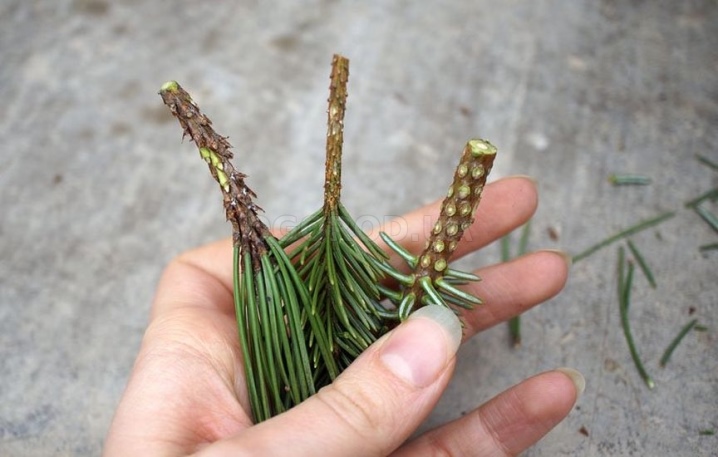
Preparatory work
Mother spruces, from which cuttings are taken, should be between 4 and 20 years old, then you can count on good rooting. Older plants after 30 years will also give results, but more modest.
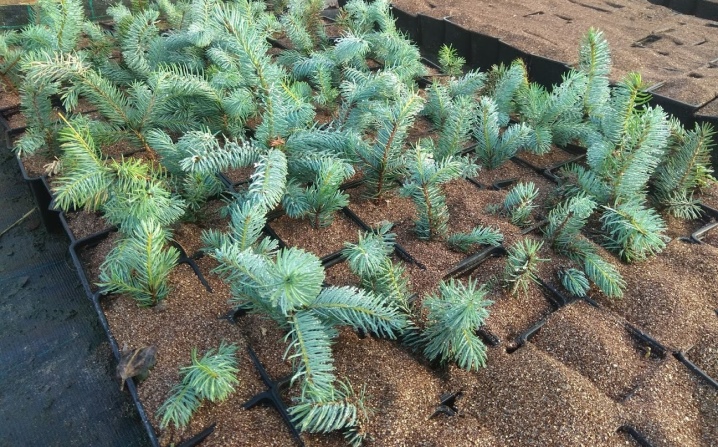
Preparation for cuttings is carried out in several stages, in which the basic requirements must be strictly observed.
- To ensure you get quality twigs, it is advisable to use trees no older than 10 years. An additional condition is that you need to cut a spruce grown from seeds.
- It is better not to cut the rooting material, but to break it off with gloved hands - this way the cutting loses less resin, and therefore less nutrients.
- You need to choose annual branches with a piece of bark, located horizontally. The necessary "heel" does not allow the resin to flow out, prevents the plant from rotting, which occurs due to the overlap of sap flow.
- Quality material is considered from the sides of the tree, its middle part or crown. A healthy shoot is yellowish, brown at the base.
- Cuttings are cut 6-10 cm long, it is advisable to plant them immediately. During transportation, the planting material is wrapped in a damp cloth.
- Experienced gardeners advise not to cut the spruce during the hot time of the day, but to do it early in the morning, when there is still dew on the branches, which will contribute to the rapid development of roots.
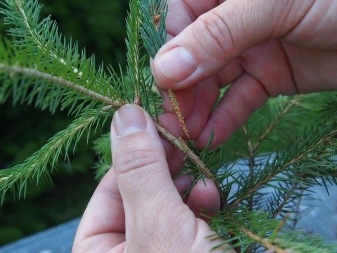
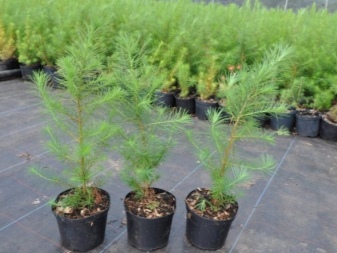
It is believed that it is best to harvest cuttings in spring - from late March to mid-May. At this time, there is an active vegetation process and swelling of the buds, in which the scales move apart and a green conical part appears.
With the right choice of time for planting, it is possible to get developed roots about 20 cm long in 2.5 months.
If you harvest the branches in the summer, then they are unlikely to have time to start up the root processes, but an influx will form on the handle, from which the root system will later develop. To speed up the process, it is recommended to use growth stimulants. Cut sections are treated with Kornevin or soaked in Heteroauxin solution.The cuttings, harvested earlier, will give roots in previously settled water, if you hold it in it for several hours.
Despite the fact that spruce can be propagated with twigs in the fall before the first frost, this should not be done, since the adaptation of winter seedlings is difficult. This process lasts 8-9 months, while in the spring it is 4-5 months maximum. In addition, one third of all sprouts perish, in contrast to spring sprouts, which almost all take root.
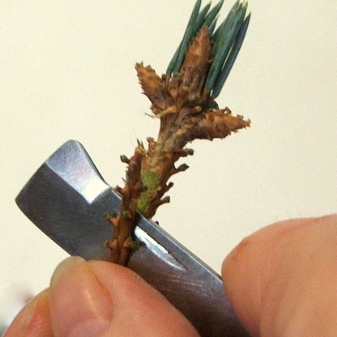
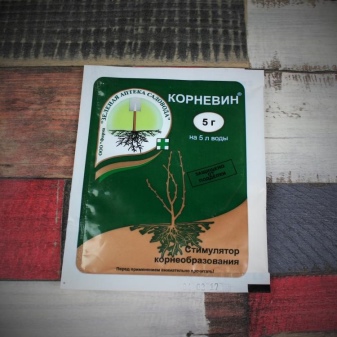
The process of planting in the ground
Before planting, the lower part of the plant is cleaned of needles and shoots, and then placed in a sugar solution (for 1 liter of 50 g of sand). The stalk should stand in it for 24 hours. Then used stimulants - humic or succinic acid.
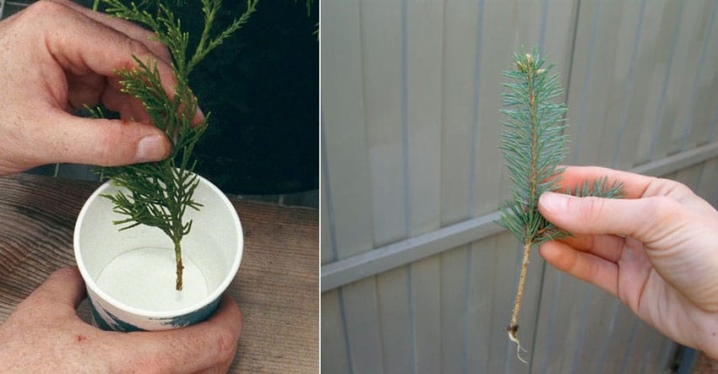
Planting at home is carried out through the following steps.
- The soil for small greenhouse containers is prepared from perlite, peat, sand and garden soil. Alternatively, a mixture of washed coir and peat is suitable. It is a loose and breathable compound that young plants need.
- At the bottom of the box, a drainage layer is laid out from screening out peat and dried bark, and a soil substrate is placed on top.
- The twigs should be planted at an angle of 30-45 degrees in holes 3-4 cm deep.If several cuttings are placed in one container, then a distance of 30 cm is kept between them.
- The earth must be compacted, and coarse river sand must be poured on top - it will prevent the roots from rotting. You can also mulch the surface of the earth with wood chips, straw, pine bark, leaving only the soil at the base of the seedling without mulch.
- Then the plants are watered and covered with a film that provides a greenhouse effect. The containers are placed in a shaded area.
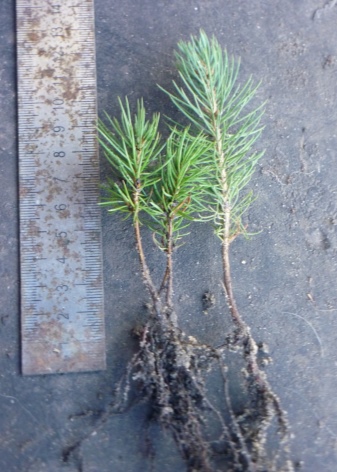
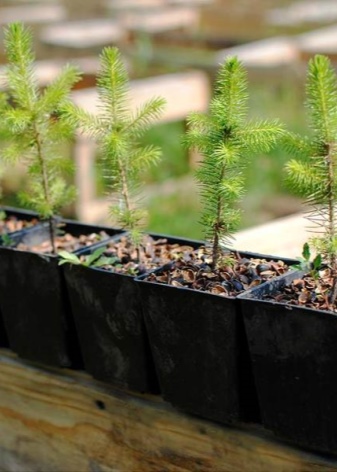
Rooting usually occurs after 2 months or a little later. Along with this, in order to successfully germinate small Christmas trees, you will need to regularly care for them, carrying out the necessary agricultural procedures.
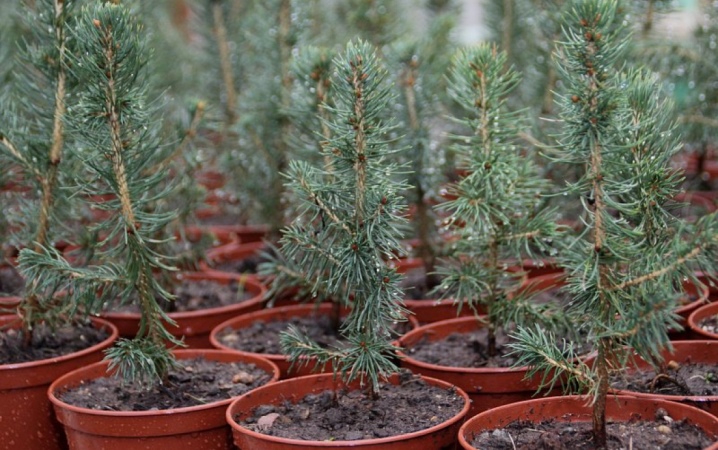
Follow-up care
As long as the twigs take root it is necessary to open the film every day and air the plantings for 15 minutes. If the growing of Christmas trees takes place directly in the greenhouse, you need to open the doors of the room or windows every day, but avoid drafts. Additionally, it is necessary to spray the air in the room and the cuttings themselves.
It is important that fresh air is constantly available to the roots, so loosening is carried out quite often.
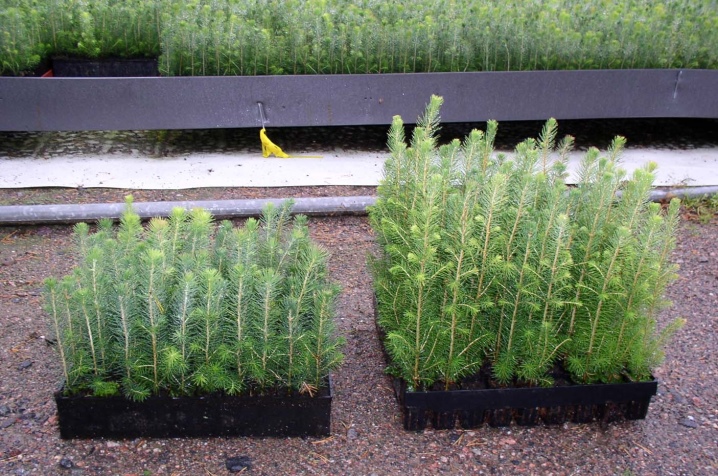
Whether the seedlings are in a greenhouse or in containers, after a while, it is necessary to carry out preventive soil treatment with insecticidal and antifungal drugs... In winter, plants should be kept under the covering material in a cool place. In the spring, you will need to inspect the shoots and re-plant the fallen and the weakest. As a rule, they all take root well during the summer.
Closer to autumn, in the last days of August, you can begin to harden the plants, taking them out into the fresh air.
By the third year of life, any variety, including ordinary spruce, acquires a strong root system, however, if you want to get really healthy, strong and beautiful trees, you need to keep young Christmas trees in greenhouse conditions for up to 5 years.
Only then can the culture be planted in a permanent place in open soil, and it is undesirable to choose for it a site where nightshade plants were previously cultivated. This soil is especially detrimental to the blue decorative spruce.
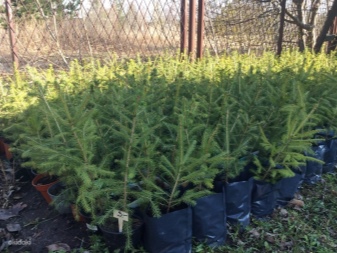
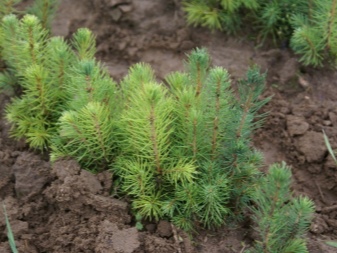
To grow a beautiful and strong tree, it is necessary to know not only the structural features of its reproductive organs, but also to follow the rules of cuttings, planting and further care of the crop.
For more information on growing and caring for spruce, see the following video in detail.



































































The comment was sent successfully.